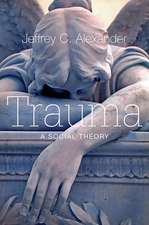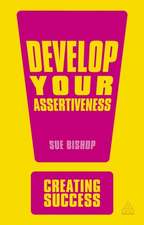Advances in Clinical Child Psychology: Volume 1: Advances in Clinical Child Psychology, cartea 1
Editat de Benjamin B. Laheyen Limba Engleză Paperback – 14 apr 2012
Preț: 394.87 lei
Nou
Puncte Express: 592
Preț estimativ în valută:
75.57€ • 78.45$ • 63.01£
75.57€ • 78.45$ • 63.01£
Carte tipărită la comandă
Livrare economică 24 martie-07 aprilie
Preluare comenzi: 021 569.72.76
Specificații
ISBN-13: 9781461398011
ISBN-10: 1461398010
Pagini: 432
Ilustrații: XVIII, 414 p.
Dimensiuni: 152 x 229 x 23 mm
Greutate: 0.58 kg
Ediția:Softcover reprint of the original 1st ed. 1977
Editura: Springer Us
Colecția Springer
Seria Advances in Clinical Child Psychology
Locul publicării:New York, NY, United States
ISBN-10: 1461398010
Pagini: 432
Ilustrații: XVIII, 414 p.
Dimensiuni: 152 x 229 x 23 mm
Greutate: 0.58 kg
Ediția:Softcover reprint of the original 1st ed. 1977
Editura: Springer Us
Colecția Springer
Seria Advances in Clinical Child Psychology
Locul publicării:New York, NY, United States
Public țintă
ResearchCuprins
1 An Evaluation of Alternative Modes of Child Psychotherapy.- 1. Introduction.- 2. The Reviews.- 3. Methodological Considerations.- 5. The Social Context of Outcome Research.- 6. Summary and Conclusions.- References.- 2 Current Developments in the Behavioral Assessment of Children.- 1. Behavioral Assessment.- 2. Classification of Children’s Behavior.- 3. Other Problems Related to Child-Behavior Assessment.- 4. Methods of Behavioral Assessment.- 5. The Psychological Evaluation from a Behavioral Viewpoint.- 6. Case Report.- 7. Conclusion.- References.- 3 The Behavioral Treatment of Disruption and Hyperactivity in School Settings.- 1. The Role of Teachers in Controlling Misbehavior.- 2. The Role of Peers in Controlling Misbehavior.- 3. The Role of a Token System in Controlling Misbehavior.- 4. Additional Procedures for Controlling Classroom Misbehavior.- 5. A Direct versus an Indirect Approach to Controlling Classroom Misbehavior.- 6. Controlling Misbehavior through Events That Precede Academic Performance.- 7. Controlling Misbehavior through Events That Follow Academic Performance.- 8. Summary and Conclusions.- 9. Special Conditions Requiring Further Behavioral Analysis.- References.- 4 Perinatal Influences on the Behavior and Learning A Problems of Children.- 1. Introduction.- 2. Major Research Issues.- 3. Review of the Literature.- 4. Background of the Educational Follow-up Study.- 5. Analysis of Educational Follow-up Study Data.- 6. Clinical Implications.- References.- 5 Social-Skills Training with Children.- 1. Introduction.- 2. Identifying Valuable Social Skills.- 3. Training through Contingent Reinforcement.- 4. Training through Observational Learning.- 5. Cognitive Mediation in Social-Skills Training.- 6. Summary and Concluding Comments.- References.- 6 Use ofBiofeedback in the Treatment of Seizure Disorders and Hyperactivity.- 1. Biofeedback.- 2. Epilepsy: General Considerations.- 3. The Use of Biofeedback in the Treatment of Epilepsy.- 4. Future Directions.- 5. Hyperkinesis: General Considerations.- 6. SMR Biofeedback as an Independent Test of the Arousal Hypothesis and a Potential Treatment Modality.- 7. Results—Hyperkinesis Study.- 8. Conclusions.- References.- 7 Assessment and Treatment of Childhood Gender Problems.- 1. The Childhood Gender Disturbances.- 2. The Diagnostic Assessment of Gender-Disturbed Boys.- 3. The Rationale for Treatment Intervention.- 4. The Research on Intervention Techniques.- 5. Other Treatment Strategies.- 6. Longitudinal Follow-up Assessment.- References.- 8 Uses of Modeling in Child Treatment.- 1. Overview.- 2. Modeling with Fearful Children.- 3. Modeling with Socially Maladjusted Children.- 4. Modeling with Distractible Children.- 5. Modeling with Severely Deficient Children.- 6. Modeling-Program Development.- 7. Discussion.- References.- 9 Research on the Education of Autistic Children: Recent Advances and Future Directions.- 1. Introduction.- 2. Recent Advances.- 3. Future Directions: Response Generalization.- 4. Conclusions.- References.- 10 The Prevention of Childhood Behavior Disorders.- 1. Person-Oriented Programs.- 2. The Physical Environment.- 3. Implementing Prevention Programs.- References.- Name Index.



















